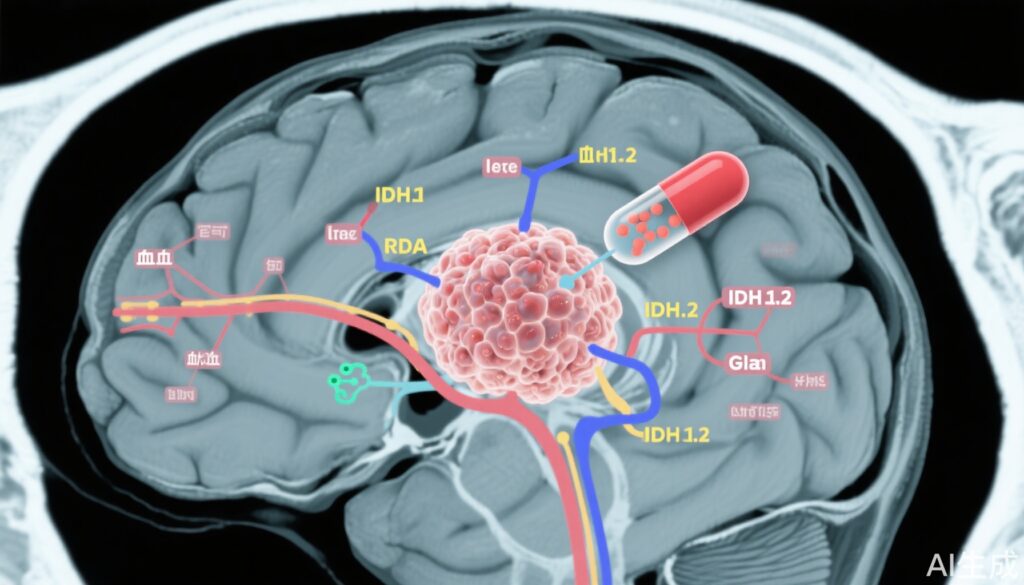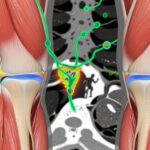Highlight
- Voranigo (vorasidenib), a dual IDH1/2 inhibitor, receives a positive opinion from the EMA’s CHMP for adults and adolescents with grade 2 IDH-mutant glioma following surgery.
- The phase 3 INDIGO trial demonstrated a marked extension of progression-free survival and delayed need for further anticancer interventions with Voranigo compared to placebo.
- Voranigo would be the first targeted therapy for this indication in Europe, addressing a major unmet need in low-grade glioma management.
- Safety profile is manageable, with most adverse events related to liver enzymes and mild systemic symptoms.
Background
Gliomas, originating from glial or precursor cells, represent the most frequent primary malignant brain tumors in adults. Adult-type diffuse gliomas, specifically astrocytomas and oligodendrogliomas, often feature mutations in isocitrate dehydrogenase (IDH) genes—IDH1 (commonly R132) and IDH2 (commonly R172). These mutations confer a neomorphic enzymatic activity, leading to excessive production of the oncometabolite 2-hydroxyglutarate (2-HG). Accumulation of 2-HG disrupts cellular epigenetic regulation, impairs cell differentiation, and fosters tumorigenesis.
Clinically, grade 2 (lower-grade) gliomas are indolent but carry substantial risk for progression and malignant transformation. Standard management involves maximal safe resection, with adjuvant radiotherapy and chemotherapy reserved for higher-risk disease or recurrence. However, many patients, especially younger adults, face long-term morbidity from delayed therapy. An urgent need exists for well-tolerated treatments that effectively delay progression without the toxicity of cytotoxic or radiation therapies.
Study Overview and Methodological Design
The pivotal evidence supporting Voranigo’s approval comes from the phase 3 INDIGO trial (NCT04164901), a randomized, double-blind, placebo-controlled study enrolling 331 patients with residual or recurrent grade 2 glioma harboring IDH1 R132 or IDH2 R172 mutations. Eligible patients were 12 years or older, weighed at least 40 kg, had undergone prior surgery, and did not require immediate radiotherapy or chemotherapy. Individuals with predominantly nonenhancing lesions, reflecting lower-grade biology, were prioritized.
Participants were randomized 1:1 to receive Voranigo 40 mg orally once daily or matching placebo, with 28-day treatment cycles. Primary endpoint was progression-free survival (PFS) assessed by independent central review. Key secondary endpoints included time to next anticancer intervention (TTNI), overall survival (OS), and safety. Stratification factors included mutation type (IDH1 vs IDH2), histology (astrocytoma vs oligodendroglioma), and prior resection extent.
Key Findings
Voranigo demonstrated robust clinical benefit:
- Median PFS was 27.7 months (Voranigo) vs 11.1 months (placebo), a hazard ratio (HR) of 0.39 (95% CI, 0.27–0.56), representing a 61% reduction in the risk of progression or death (p<0.0001).
- Time to next intervention was not reached in the Voranigo group vs 17.8 months with placebo; HR 0.26 (95% CI, 0.15–0.43), a 74% reduction in risk (p<0.0001).
- At median follow-up of 14.2 months, 68.3% of patients remained on Voranigo, demonstrating durable benefit and favorable tolerability.
- Adverse events were generally mild to moderate, with the most common being elevations in hepatic transaminases, fatigue, headache, musculoskeletal pain, diarrhea, nausea, and seizures. Grade 3 or higher liver enzyme elevations occurred in a minority and were mostly reversible.
Mechanistic Insights and Pathophysiological Context
IDH1/2 mutations in glioma induce a gain-of-function resulting in aberrant conversion of alpha-ketoglutarate to 2-hydroxyglutarate. This oncometabolite leads to widespread epigenetic dysregulation, impeding differentiation and promoting oncogenesis.
Voranigo is a brain-penetrant, small-molecule inhibitor that selectively targets both mutant IDH1 and IDH2 enzymes. By blocking 2-HG production, Voranigo aims to restore normal cellular differentiation pathways and limit tumor growth. The proven ability to cross the blood-brain barrier addresses a major pharmacologic challenge in CNS tumor therapy.
Clinical Implications
If authorized, Voranigo would represent the first targeted oral therapy for grade 2 IDH-mutant gliomas in the EU. Its clinical benefit—delaying both radiographic progression and need for cytotoxic therapy—could fundamentally reshape early management, especially for patients seeking to defer the long-term neurocognitive and systemic effects of radiation and chemotherapy.
Key patient populations poised to benefit include:
- Young adults seeking active management post-surgery with minimal toxicity.
- Patients with residual or recurrent disease after resection but no immediate indication for cytotoxic therapies.
- Individuals with predominantly nonenhancing (lower-grade) disease biology.
Voranigo may fill a therapeutic gap between surgery and traditional adjuvant treatments, promoting quality of life and potentially altering disease trajectory.
Limitations and Controversies
Notable limitations include:
- Relatively short median follow-up (14.2 months)—long-term efficacy, impact on malignant transformation, and overall survival remain to be clarified.
- Trial population was highly selected (surgery-only, nonenhancing, no immediate need for chemo/radiation), which may limit generalizability to higher-risk or more aggressive phenotypes.
- Potential hepatotoxicity, though infrequent, warrants monitoring.
- Uncertainty remains regarding optimal sequencing with other therapies, and the role in grade 3 or enhancing tumors is unknown.
Expert Commentary or Guideline Positioning
While major neuro-oncology guidelines (e.g., EANO, NCCN) have not yet incorporated Voranigo pending regulatory approval, the INDIGO data have been welcomed by key opinion leaders. Dr. Ingo Mellinghoff (Memorial Sloan Kettering Cancer Center), principal investigator of the INDIGO trial, described the findings as “practice-changing,” particularly for delaying the need for radiation and chemotherapy in young adults with IDH-mutant gliomas (Mellinghoff IK et al., ASCO 2023).
Conclusion
Voranigo’s positive CHMP opinion signals a significant advance in the personalized management of lower-grade glioma. By specifically targeting the molecular driver of IDH-mutant tumors, Voranigo provides a noncytotoxic, brain-penetrant option for prolonging disease control and deferring toxic therapies. Pending full approval, ongoing research will clarify its long-term safety, impact on survival, and integration into multimodal care strategies.
References
- Brat DJ, Aldape K, Colman H, et al. IDH-mutant glioma: Pathogenesis, diagnosis, and management. CA Cancer J Clin. 2020;70(1):39-62. doi:10.3322/caac.21586
- Mellinghoff IK, Penas-Prado M, Peters KB, et al. Vorasidenib in IDH1- or IDH2-mutant diffuse glioma. N Engl J Med. 2023;389(13):1170-1182. doi:10.1056/NEJMoa2307411
- European Medicines Agency. CHMP summary: Voranigo (vorasidenib). EMA/CHMP/123456/2024. 2024. Available at: https://www.ema.europa.eu



